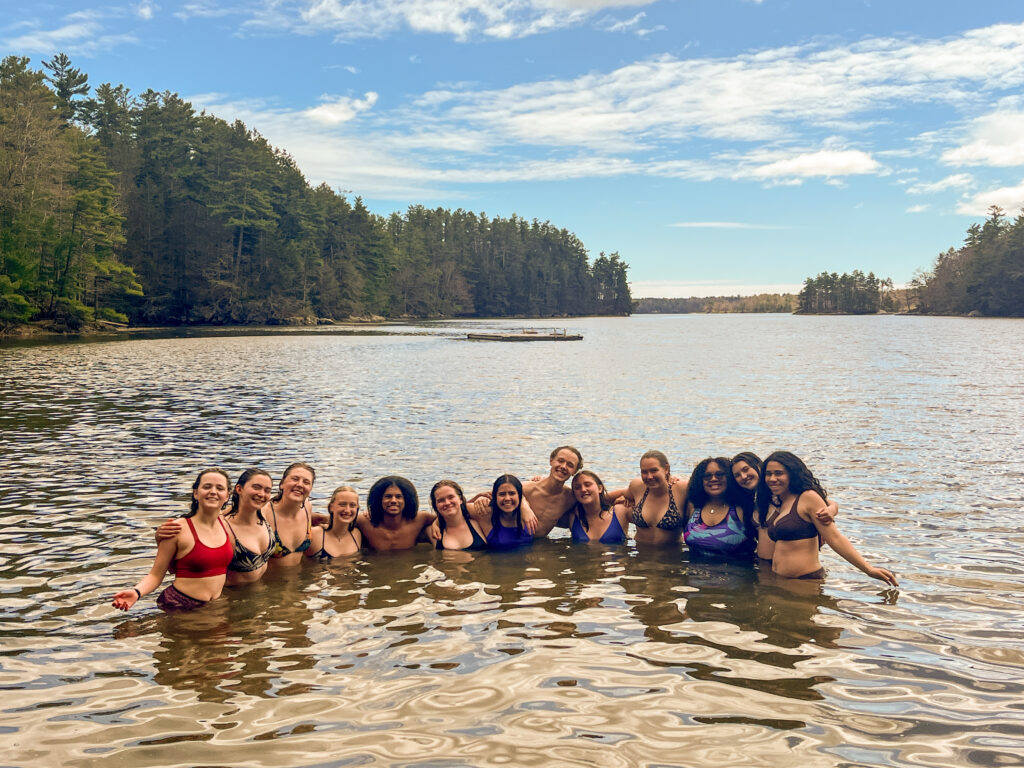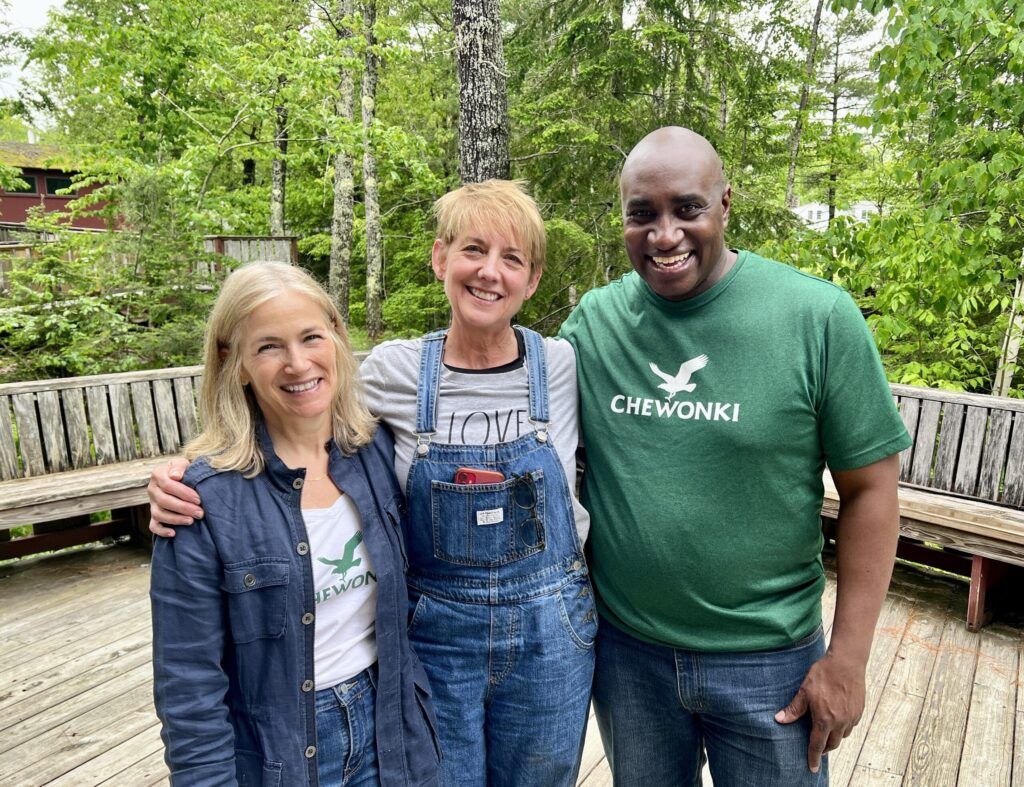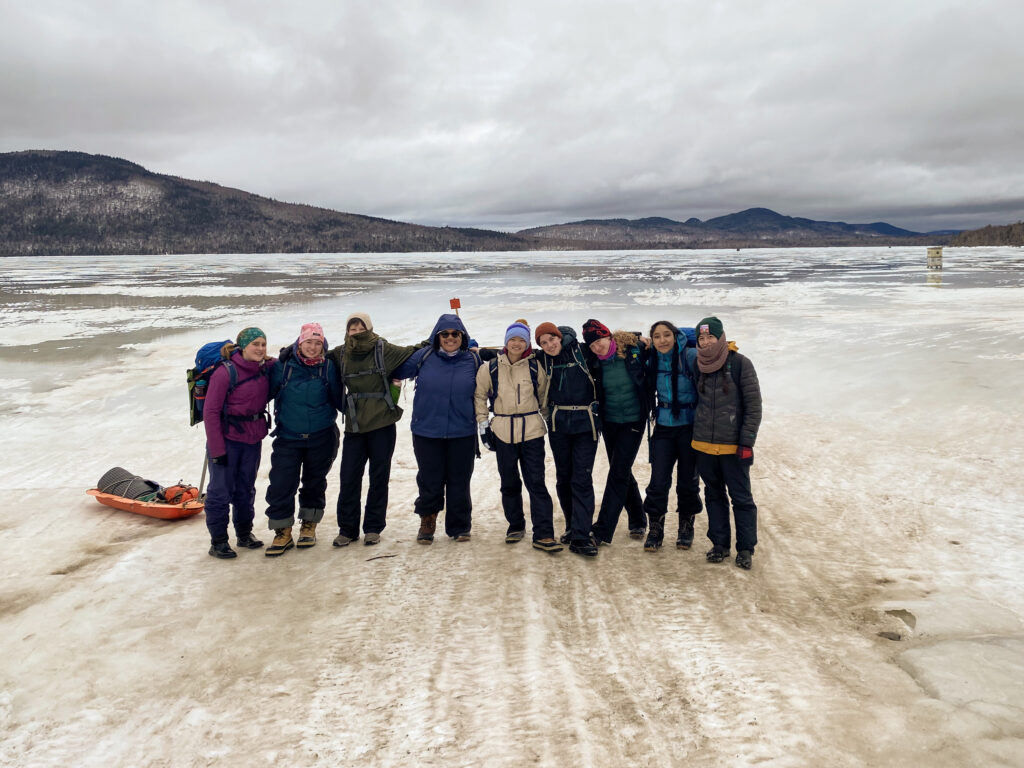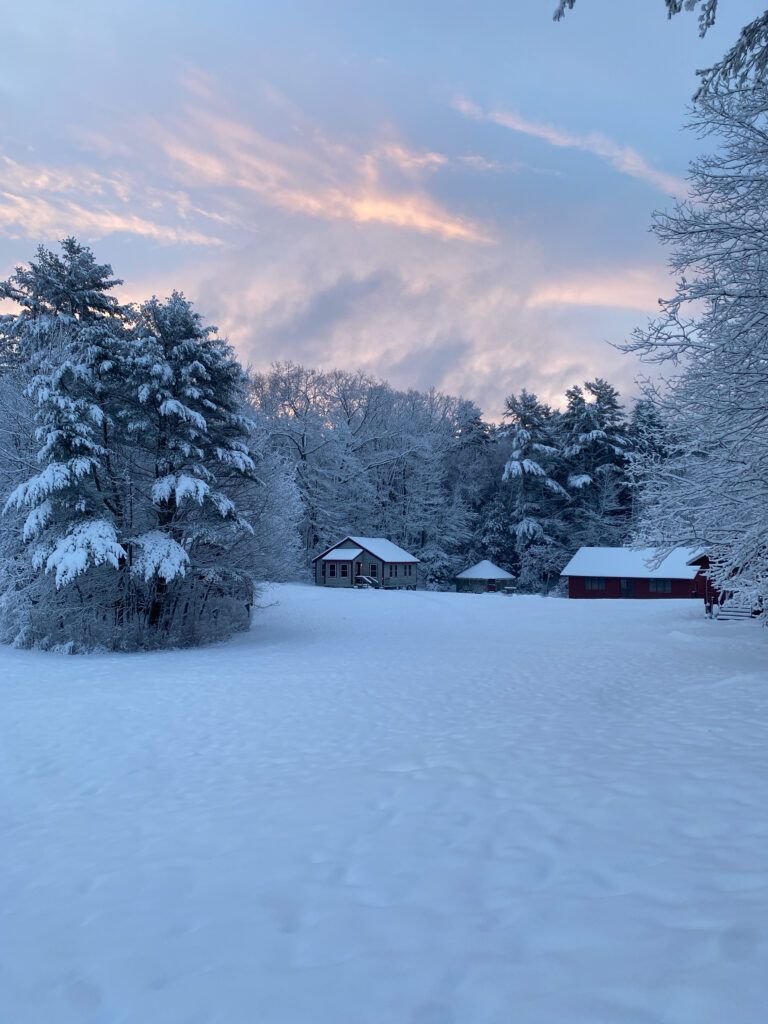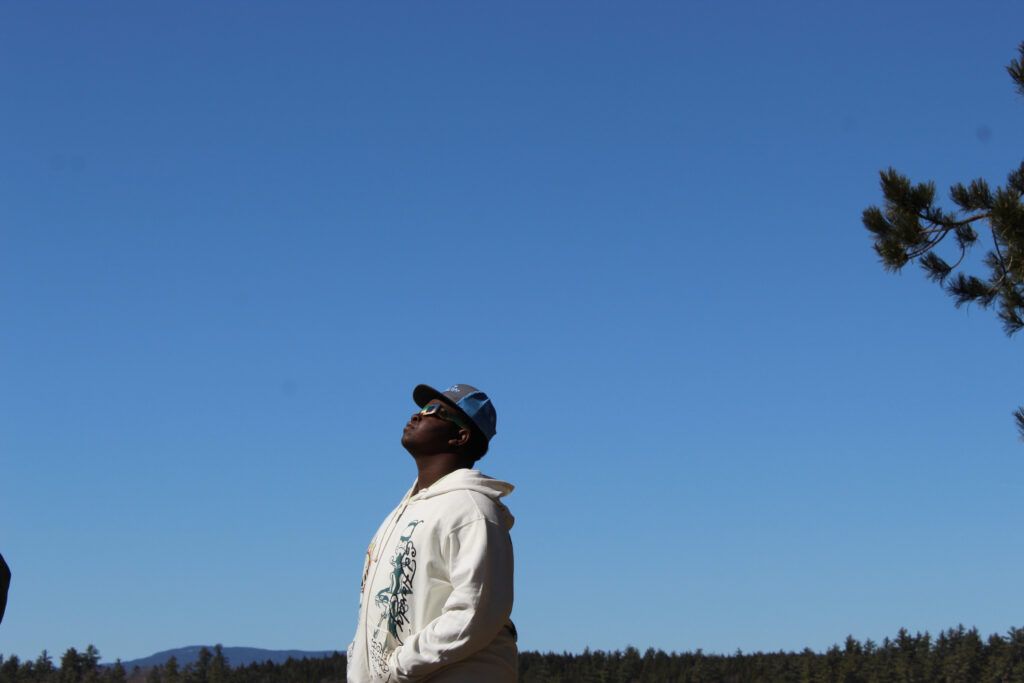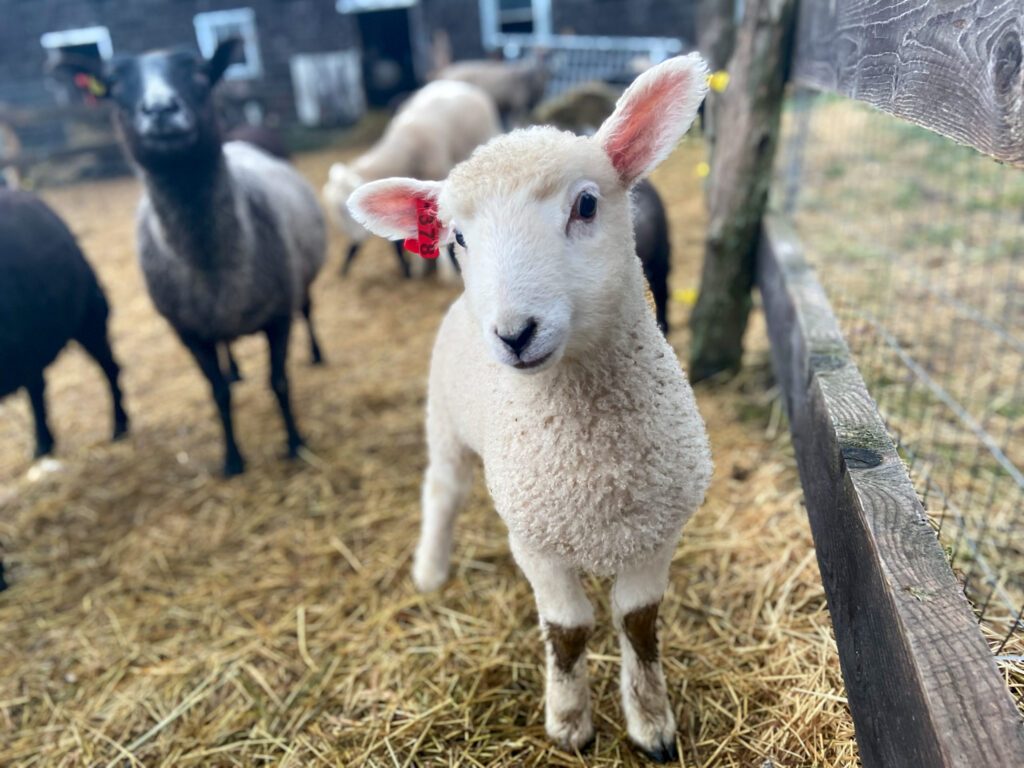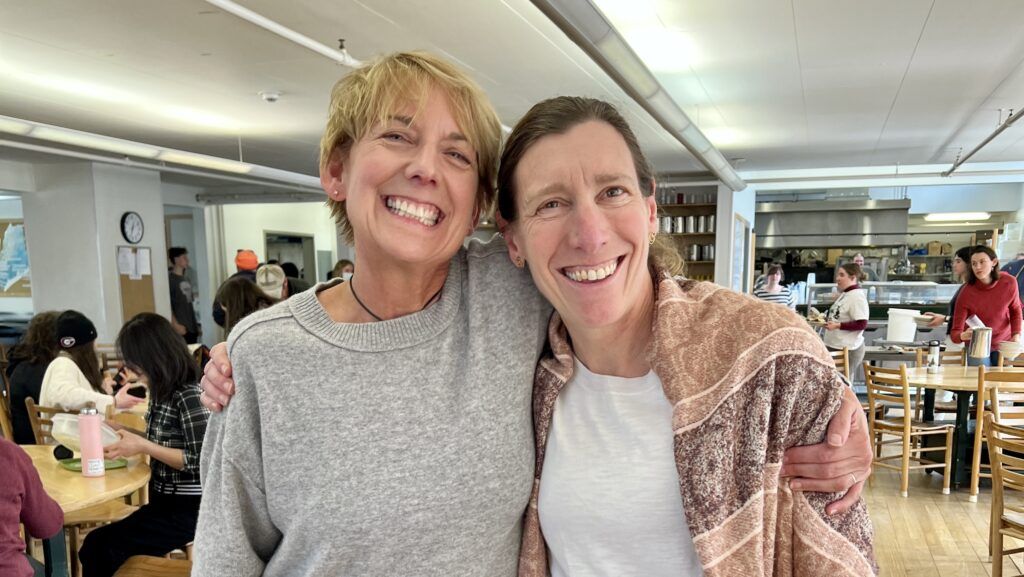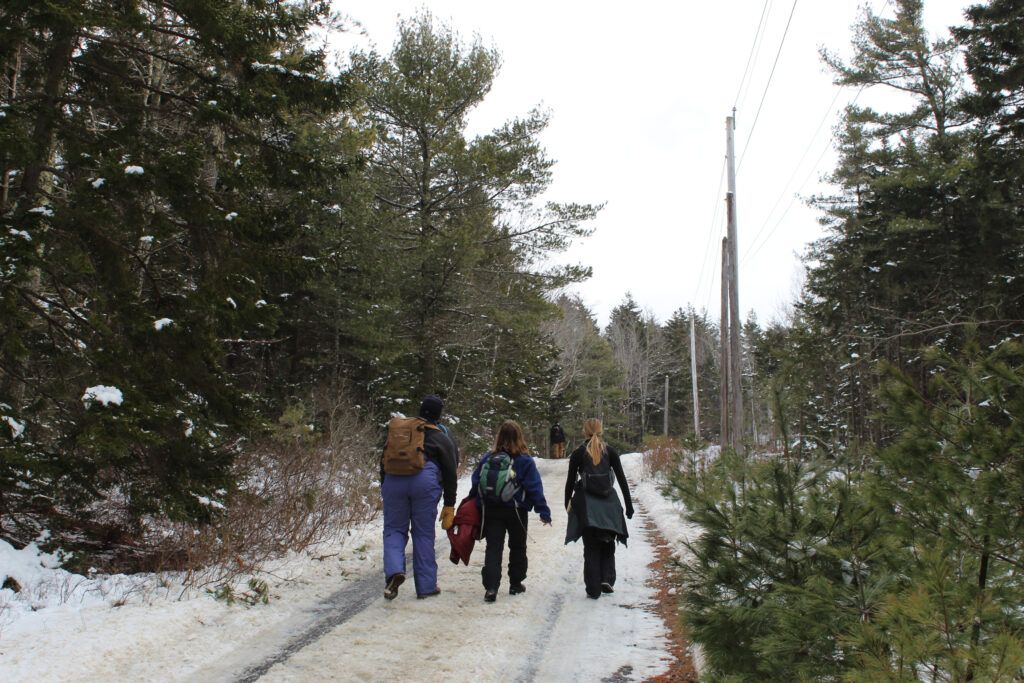Nearly every day I can hear the sounds of construction if I head towards the farm. Between Pack-Out and Park Ave, a future house sits, a passive home that could be heated all the way through the winter with the amount of power required to run a hairdryer. This incredible house is fascinating to me and has been the subject of many of my conversations with Pete Sniffen, the Environmental Issues and Energy Systems teacher. We talk about it in class, at meals, walking around campus — whenever we are having a friendly conversation.
Today, I was able to join a tour for the Chewonki Board of Trustees and see the house up close and personal. The exterior walls each have thirteen-inches of foam and cellulose insulation. The foundation is made from layered foam, eight-inches of crushed rock, and a concrete slab. The insulation, along with incredible windows and doors, means that the house can be heated during the winter with about 2000 watts of electricity, about the same amount of power needed to run hair-dryer. Estimated heating costs are $200-$300 for the whole year. To put this in context, the average Maine home costs almost ten times that to heat and usually requires a combination of wood, oil, natural gas, and propane — not just electricity.
The passive house duplex will be the future home of two faculty members and their families. Each side has about 250 square feet of living space with two bedrooms, one and a half baths, deck, kitchen, and outdoor storage space. Carob Arnold, the Facilities Manager, told me that the layout of each apartment was designed both to provide adjustable storage and to facilitate the interplay of public and private spaces. The first floor has a mudroom for visitors, like students coming for an advisory dinner, and an open kitchen that promotes free talk between the cook and guests, for example. The living rooms have big, triple-glazed windows from Germany that overlook Chewonki’s Salt Marsh Farm.
The opportunity to see this sustainable housing project up close was super valuable to me because my Human Ecology Capstone project focused on sustainable housing solutions, specifically Tiny Homes. Touring a passive house and talking to people like Pete Sniffen and Carob Arnold, Chewonki’s facilities manager, who have a wealth of knowledge about the home’s construction and energy systems, is something I would never have been able to do at home or through my sending school.
My Human Ecology Capstone project is based around sustainable housing solutions, Tiny Homes in particular. This opportunity to see a super-house of sustainability was super valuable, and something I would never have been able to do at home, much less through my public school. Getting to see the house that people will be living in next year was something I didn’t ever think I would do at school, and being able to talk to people like Carob, who know everything about that home, gives me an invaluable experience, especially given my love for Tiny Homes.
Malcolm McGraw, Newton South High School, Newton, Massachussetts

